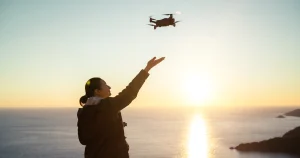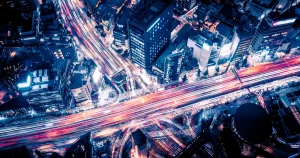7th note in the tonic solfa representation of the diatonic scaleslurat the "WE, ROBOT" event at Warner Bros. Studios in Los Angeles on October 10, 2024,FinisFully automated robo-taxi."salad bowlIbercabannounced the "Cyber Cab". The CyberCab is a two-seater vehicle without handlebars or pedals, and uses a wireless charging system.Price: $30,000 (approx. 4.5 million yen)The company aims to achieve the followingProduction starts in 2026-2027The company plans to
This article details the innovative technology and basic features of Tesla's self-driving cabs and explores how future mobility will change.
What is Tesla's self-driving cab?

What are the basic features of Tesla's self-driving cabs?
Tesla's self-driving cabs combine the company's electric vehicle technology with advanced self-driving systems to safely and efficiently transport passengers to their destinations. Basic features include the following
- Fully automatic operation function:
Equipped with Tesla's proprietary Autopilot and FullSelf-Driving self-driving systems, the car can drive without driver intervention. - Destination Setting:
Passengers can set their destination through a smartphone app and call an automated cab. - Automatic payment of boarding fees:
The fare for the ride is automatically settled by credit card or electronic payment. - Safety features:
Multiple sensors and cameras are installed to ensure safe driving by constantly monitoring the surrounding conditions. - Comfortable interior space:
Spacious interior and comfortable seats provide a pleasant travel experience.
These basic features make Tesla's robo-taxi a safe, efficient, and convenient next-generation mode of transportation.
How do Tesla's self-driving cabs run?
Tesla's self-driving cabs run on a unique and advanced self-driving system. This system utilizes camera-based visual information and AI technology to enable safe and efficient driving while keeping track of surroundings in real time.
Overview of Tesla's self-driving technology
Tesla is developing Autopilot and Full Self-Driving (FSD) as self-driving technologies. These systems are continuously evolving by using AI to analyze vast amounts of driving data.
In particular, FSD is designed to enable vehicles to recognize complex traffic situations and use their own judgment to select routes, change lanes, and pass through intersections. This greatly reduces the number of situations where a human driver is needed.
Tesla's sensors and real-time decision-making capabilities
Tesla's FSD system uses a camera as the primary sensor, and AI analyzes the image data to understand the situation around the vehicle. This allows the system to quickly perform actions such as lane keeping and obstacle avoidance.
Note that Tesla has recently scaled back the use of radar and ultrasonic sensors and shifted to a camera-based approach. This strategy is based on a vision-centric technology called "Tesla Vision.
Route selection and safety of self-driving cabs
Tesla's self-driving cabs not only travel along pre-defined routes, but also have the ability to select the best route based on real-time traffic information. This allows them to arrive at their destinations efficiently while avoiding traffic jams and accidents.
In addition, the FSD system anticipates the movements of pedestrians and other vehicles at intersections and makes appropriate decisions to maintain safe driving. For example, the system is designed to perform accurate maneuvers even in challenging situations such as the sudden appearance of obstacles or inclement weather.
What is Tesla's goal of fully automated driving?
Tesla is actively engaged in the development of self-driving technology with the goal of achieving fully automated driving. Fully automated driving refers to a state in which a vehicle can drive safely in all situations without driver intervention.
Tesla is working on the following initiatives to achieve fully automated driving
- Evolution of automated driving systems: We are constantly incorporating the latest technologies to improve the accuracy and reliability of our automated driving systems.
- Driving data collection and analysis: We are collecting vast amounts of driving data and using machine learning algorithms to advance the learning of automated driving systems.
- Enhanced safety: Multiple sensors and cameras are installed to enhance safety functions to ensure safe automatic driving.
- Compliance with Laws and Regulations: We closely monitor trends in laws and regulations related to automated driving and ensure compliance with laws and regulations.
Tesla believes that fully automated driving will make a significant contribution to society by reducing traffic accidents, eliminating traffic congestion, and shortening travel time.
Tesla's Robotaxi Vision and Competitors' Approaches

Tesla's Robotaxi aims to achieve fully automated driving (Level 5), developing versatile automated driving technology that does not rely on map data and can respond to unknown environments by utilizing real-time visual data and AI. To achieve this vision, Tesla has adopted a different approach than other self-driving technology adopters, a comparison of which is provided below.
Technological Conflict between Waymo and Tesla
Waymo, a subsidiary of Alphabet (Google's parent company), provides highly accurate automated driving systems using map data and sensor technology. Waymo's approach is characterized by the following features
- LiDAR-centric sensor technology
Waymo combines LiDAR (light detection and ranging), high-precision cameras, and radar, and utilizes detailed map data (HD maps) for operations with pre-defined response areas. - Regional Level 4 automatic operation
The company offers Waymo One, a Level 4 self-driving cab service in certain areas, including the Phoenix metropolitan area and San Francisco, and aims to make the service operational in both urban and suburban areas.
Tesla, on the other hand, is leveraging cameras and AI to achieve generic Level 5 automated driving without relying on LiDAR or detailed map data. This approach eliminates geographical limitations and allows for flexible global deployment in unknown environments. While Waymo focuses on stability and limited regional operations, Tesla emphasizes flexibility for worldwide availability.
Amazon and Tesla's self-driving technology
Zoox, an Amazon-owned company, aims to create a self-driving cab service focused on short trips in urban areas.Zoox's features include the following
- Design of fully automated dedicated vehicles
Zoox has developed a vehicle from the ground up with a symmetrical front-to-back design and elimination of the steering wheel, to ensure safety and efficiency in urban areas. - Use of LiDAR and map data
Like Waymo, Zoox utilizes LiDAR and highly accurate map data to enable highly accurate operations in urban areas.
Tesla's approach, on the other hand, differs in that it aims to operate over a wide area by adding general-purpose automated driving functions to existing vehicles. Tesla also uses AI to analyze real-time visual information and emphasizes operations that do not rely on map data. Unlike Zoox, which is urban-specific, Tesla aims to accommodate a wide range of scenarios, including long-distance travel and suburban use.
Uniqueness of Tesla's Business Model
Tesla's vision for robo-taxis is to achieve general-purpose, fully automated operation that does not rely on map data and leverages real-time AI technology. Waymo and Zoox, on the other hand, leverage detailed map data and sensor technology, and have the advantage of localized or city-specific operations. Comparing these different approaches highlights Tesla's innovative vision and its challenges.
Moreover, Tesla's vision is reflected not only in its technology, but also in its business model. Tesla is expanding its revenues beyond car sales through value-added services such as software updates and self-driving services. The company's vehicles are positioned as constantly evolving technology products, not just a means of transportation. This allows customers to continually experience new features through software updates, and Tesla vehicles continue to add value even after purchase.
The company is also creating a new revenue stream by offering self-driving services, a strategy that sets it apart from traditional automotive industry business models. This uniqueness is a key element that differentiates Tesla from its competitors and at the same time has the potential to bring new revenue opportunities to the market.
Tesla's vision and unique business model for robo-taxis is more than just a technological innovation; it is a challenge to create the future of transportation and a new economic sphere.
What will the business model for self-driving cabs look like?

What will be the pricing of self-driving cabs?
Tesla's CyberCab self-driving cab is expected to be competitively priced compared to traditional cab services: the model, announced in October 2024, will reportedly cost less than $30,000 and operate at a cost of 20 cents per mile (about $30 for 1.6 km) This low-cost operation is reportedly aimed at This low-cost operation is due to the fact that the self-driving system will reduce labor costs and, as an electric vehicle, fuel costs will also be lower.
Tesla's vision is to dramatically improve the efficiency of urban mobility by providing an easily accessible means of transportation for everyone. Therefore, a pricing strategy that maximizes convenience while reducing the financial burden on users is expected to be adopted.
Which market is Tesla's self-driving cabs targeting?
Tesla is looking first to urban areas with high population density and traffic demand as target markets for its self-driving cabs. The company has received regulatory approval in California and Texas and has announced plans to begin mass production in 2026. In these regions, there is a strong demand for reducing traffic congestion and travel costs, and self-driving cabs are expected to be in great demand as an efficient means of transportation.
Furthermore, Tesla has the potential to provide a safe and convenient means of transportation for people who have difficulty using conventional cab services, such as the elderly and disabled. Although no specific plans have been announced at this time, it is expected that the evolution of self-driving technology will enable the realization of services that meet a variety of needs.
Tesla's business model and the potential of self-driving cabs
Tesla's self-driving cab business represents a vision that goes beyond simply providing a means of transportation. In addition to vehicle sales, the business model is designed to increase revenue through software updates and self-driving services. This model provides new value to customers by positioning the car as a constantly evolving technology product.
Tesla's robo-taxi is expected to serve as an efficient means of solving urban traffic problems and, moreover, as a social infrastructure that will change the shape of mobility. If Tesla's vision is realized through its pricing and target market strategies, a new future of mobility using self-driving technology will take shape.
Tesla's Challenges in Deploying Self-Driving Taxis and Efforts to Solve Them

Tesla's self-driving cabs have the potential to revolutionize the future of transportation. However, several challenges must be overcome to make this vision a reality. Tesla is taking aggressive steps to address these challenges, paving the way for the future.
Safety Issues
Safety of automated cabs is one of the most important issues in the deployment of the service. In particular, dealing with inclement weather, complex traffic conditions, and unexpected situations is an unsolved issue. However, Tesla is applying cutting-edge technology to solve this problem.
Tesla's self-driving system utilizes the camera-centric "Tesla Vision" and AI algorithms, which have the ability to understand the vehicle's surroundings in real time. In addition, Tesla is continuously collecting vast amounts of driving data and improving its AI models in order to improve safety. In addition, efforts are underway to increase system reliability through advances in sensor technology and software updates.
Through these technological initiatives, Tesla aims to provide peace of mind to users and build trust throughout society.
Improvement of charging infrastructure
Since Tesla's self-driving cabs are electric vehicles, the charging infrastructure is an important factor in the success of the business. Tesla is developing its own network of "Superchargers" around the world to reduce charging times and establish an efficient charging regime.
In addition, through collaboration with the government and the private sector, we aim to expand the charging infrastructure, particularly in urban areas. This is expected to provide the infrastructure to support large-scale operations of self-driving cabs and accelerate the spread of the service.
Tesla is also focusing on research and development of fast charging technology, with the goal of further reducing the time required for charging through future technological advancements.
Compliance with legal regulations
Legal regulations in each country and region are an important factor in the deployment of self-driving cabs. Tesla is in the process of obtaining regulatory approvals in key regions, such as California and Texas, while also working to develop standards at the federal level.
Tesla is also strengthening its cooperation with regulatory authorities and is actively involved in developing and improving safety standards for self-driving technology. This approach is an important step toward the acceptance of self-driving cabs by society.
In addition, Tesla has a vision that goes beyond regulation and plays a leading role in the industry as a whole through technology development and customer communication with a focus on transparency.
What are Tesla's plans for launching a self-driving cab service?

Current Development
Tesla is currently actively testing a self-driving cab service in the San Francisco Bay Area. This test service is offered primarily to employees, who can use a dedicated dispatch app to call a self-driving vehicle. The test vehicles are accompanied by a safety driver and are equipped with the latest Full Self-Driving (FSD) software.
The demonstration collects operational data in complex urban environments and addresses a wide range of issues including traffic signals and interactions with pedestrians and bicyclists. This data is being used to improve system reliability and ensure safety, and supports the evolution of Tesla's self-driving technology.
Deployment plan for 2025
Tesla has announced plans to launch a fully self-driving cab service without a safety driver in the states of California and Texas by 2025. These two states were selected because they are home to Tesla's major production facilities and have relatively well-developed regulatory environments.
However, the realization of fully automated driving requires approval from multiple regulatory agencies. California, in particular, has strict safety standards and testing requirements, and the collection and verification of safety data is essential to meet these requirements. Tesla is currently actively addressing these challenges.
Future Outlook
It is assumed that Tesla plans to first deploy a self-driving cab service utilizing its existing Model 3 and Model Y vehicles, and then transition to the new "Cyber Cab" vehicle. This is based on a pragmatic strategy to launch self-driving services early and gain a foothold in the market by utilizing existing vehicles before 2026, when the CyberCab is scheduled for mass production.
However, there is no official statement from Tesla regarding this plan. The information that has been released at this time focuses on the design, pricing, and production goals of the CyberCab, with no details on how the existing vehicle will be positioned.
Tesla's self-driving cab service has the potential to revolutionize urban transportation. It will create a new future of mobility while leveraging the data and technology accumulated to date, while adapting to the regulatory environment.
Tesla's self-driving cabs will revolutionize future transportation

Elon Musk's Predictions for the Future
Elon Musk predicts that the widespread use of self-driving technology will lead to a shift from an era in which individuals own their own cars to "on-demand transportation," in which people use transportation services as and when they need them. If this vision comes to fruition, it will revolutionize the way people get around, and the automotive industry will undergo major changes.
Traditionally, automakers' revenue model has centered on vehicle sales, but with the evolution of self-driving technology, vehicle sales may decline and instead the provision of self-driving cab services and related software may become a major source of revenue. Mr. Musk's vision is not merely a technological innovation, but has the potential to transform the business model of the entire automotive industry.
Impact on urban transportation
Tesla's self-driving cabs could have a profound impact on urban transportation. Some of the key changes include
- Traffic congestion relief:.
Self-driving cabs are expected to alleviate traffic congestion in urban areas by selecting optimal routes and streamlining the flow of traffic. - Reduction in traffic accidents:.
Automated driving systems have the potential to significantly reduce human error and the number of accidents. - Reduced travel time:.
Travel time is expected to be reduced due to fast and efficient route selection. - Improved transportation access:.
It provides a safe and convenient means of transportation for the elderly, disabled, and other people who have difficulty getting around. - Decreased demand for parking:.
As self-driving cabs become more prevalent, personal car ownership may decrease and the need for parking spaces may also decrease. - Impact on urban planning:.
The widespread use of self-driving cabs may change the way urban space is used and allow for more flexible urban planning.
Thus, Tesla's self-driving cabs have the potential to fundamentally transform urban transportation infrastructure. In addition to providing an efficient means of transportation, they are expected to play an important role in reorganizing urban space and reducing environmental impact, thereby helping to create a sustainable city.
What is its role as an electric vehicle?
Tesla's self-driving cabs are expected to contribute to the environment because they are electric vehicles.
- Reduction of greenhouse gas emissions
Compared to gasoline-powered vehicles, electric vehicles emit zero CO₂ during driving, contributing to the fight against global warming. - Air Pollution Control:.
Since it does not emit exhaust gases, it also helps to improve air quality in urban areas. - Improved energy efficiency:.
Electric vehicles are more energy efficient than gasoline-powered vehicles and consume less energy.
Furthermore, in combination with renewable energy sources, there is potential to reduce the environmental impact of the electricity supply phase as well. In this way, Tesla's self-driving cabs will be an important step toward the realization of a sustainable transportation system.
Summary: Tesla's self-driving cabs will transform future transportation.
Tesla's self-driving cabs have the potential to revolutionize the automotive industry. By combining advanced self-driving technology with the advantages of being an electric vehicle, it is expected to provide a safe, environmentally friendly, and convenient means of transportation.
However, full realization will require overcoming challenges such as safety, legal regulations, and social acceptability. While addressing these challenges, Tesla will continue to reshape the transportation systems of the future and evolve toward a more sustainable urban society.









Comment